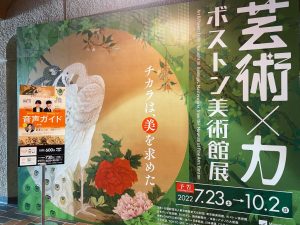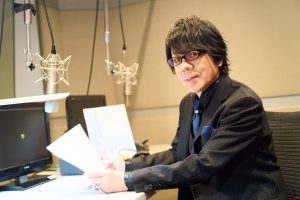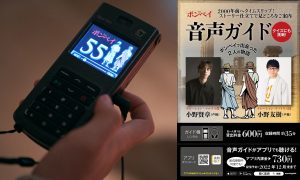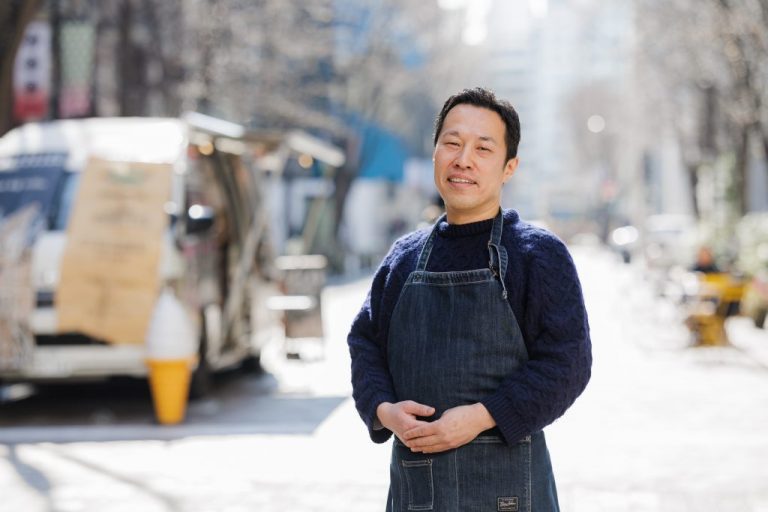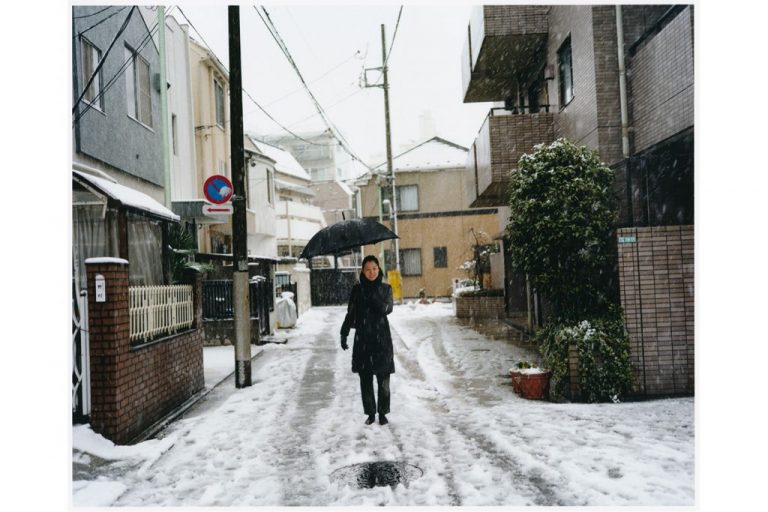Kabuki is one of Japan’s traditional performing arts. Many of the Kabuki plays were created in the Edo period and include various aspects, such as the meanings of lines and movements, that are difficult to understand today not only for beginners but also for those who have watched Kabuki performances more than once. What becomes invaluable in such instances is the audio guide, which provides introductions to actors, synopses, explanations of costumes, props, music, historical backgrounds, and the unique conventions of Kabuki. Kabuki’s audio guides are broadcast in synchronization with the live stage performances. In this article, we explore how they are made.
How Are Audio Guides for Kabuki Made?
Recommending Audio Guide Use
No.005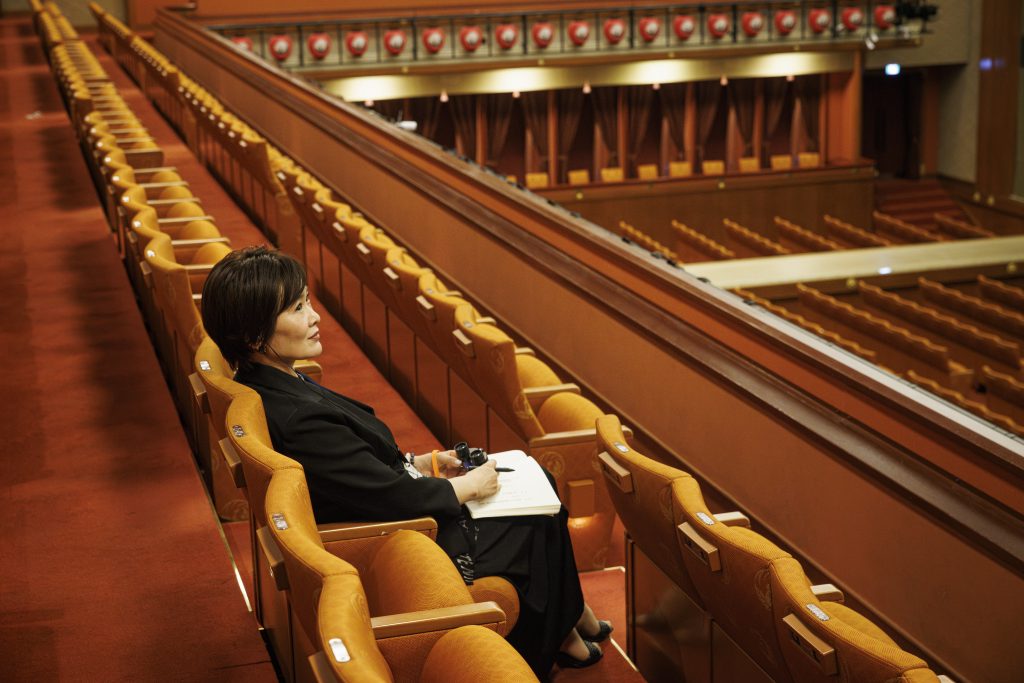
This article series meets with people involved in audio guides, such as an audio guide producer, to dig deeper into how to enjoy “listening” to art. This time, we spoke with Aoi Yokode, who will be providing audio guide commentary for the July Program’s evening show at the Kabukiza Theatre in Higashi Ginza, Tokyo, and asked her about the simultaneous commentary earphone guide for Kabuki performances.
How to Become Audio Guide Commentator
The audio guide is produced by Earphoneguide Co., Ltd., located near the Kabukiza Theatre. The company began broadcasting regularly at the theatre in 1976. Today, it provides audio guides and subtitle services for Kabuki as well as other performing arts, including Bunraku, Noh, opera, musical, and ballet.
Currently, there are about 30 audio guide commentators specializing in Kabuki and Bunraku (about 20 of them are Japanese language commentators), and Ms. Yokode, whom we spoke with this time, is one of them. She has been serving as a commentator for about 10 years after she passed the audition, which is focused on the person’s knowledge of the plays, their skills to explain things clearly, and the quality of their voice for ease of listening.
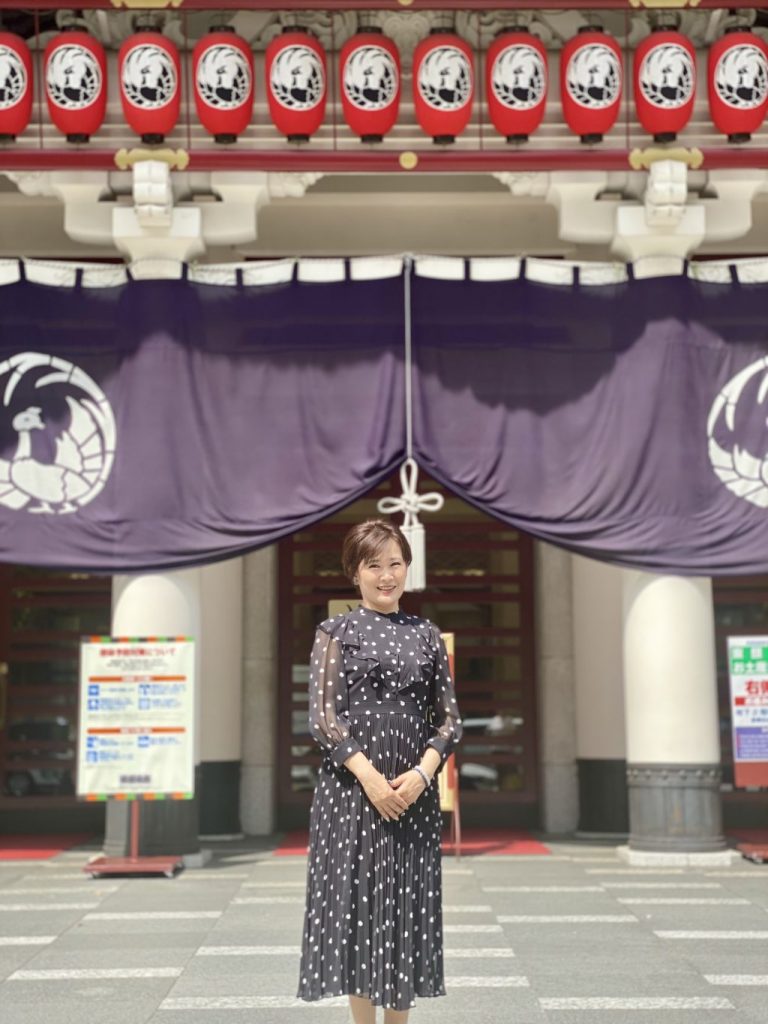
Ms. Yokode went to the Kabukiza Theatre for the first time about 20 years ago, accompanying her friend. Engrossed by the allure of Kabuki, she started buying tickets herself the following month and became a regular goer. She felt, “I’m not exposed to traditional performing arts on a regular basis, but if someone like me can find it so fascinating, anyone has the potential to feel the same. I want to build up Kabuki fan base!” and decided to audition to become a commentator. She aims to produce commentaries that are enjoyable to younger generations in particular, so that the audio guide can help them feel welcome, even if they find Kabuki daunting at first.
Process of Making Audio Guides
The production of audio guides for Kabuki, which puts on different plays each month, begins with the Earphoneguide company selecting suitable commentators for the scheduled performances.
The selected commentators research the plays and, upon receiving the scripts, start drafting their comments. After the production staff at Earphoneguide reviews the drafts, the commentators record and edit their audio commentaries.
The commentaries are recorded about 3 to 4 days before the opening day. After that, the commentators check their recordings at the rehearsal, and if there are any discrepancies from what they originally anticipated, all the relevant comments are revised, re-recorded, and edited to be ready for the opening. Sometimes, all comments need to be re-recorded, so the production process has to move swiftly.
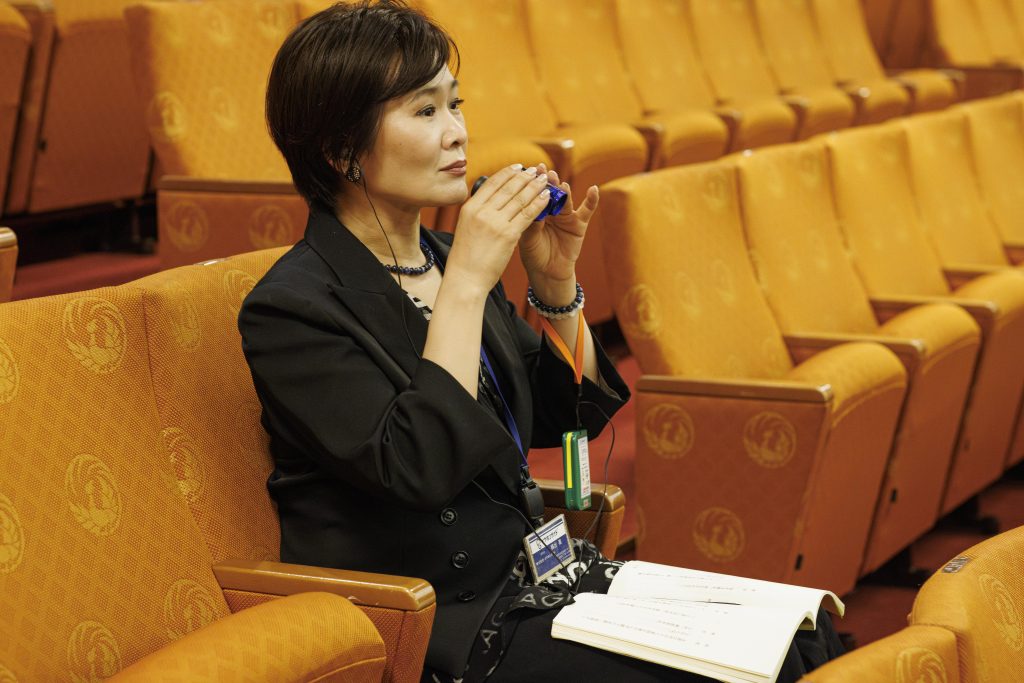
“Even with classic plays that have been performed many times, the interpretation can vary from actor to actor, and even with the same actors, the tempo of their lines can change. This means that the comments I prepare may not be usable,” says Ms. Yokode.
In the July performance, Ms. Yokode will provide commentary for Sennari Byōtan Hatameku Isaoshi: URAOMOTE TAIKŌKI (Two Sides of the Biography of Toyotomi Hideyoshi). The play, which is centered around the warlord, will be staged for the first time in 43 years. There is almost no archive material available from the previous performance, including the recorded footage, but, as Ms. Yokode explains about the production process, “Reading the script, I can envision how the scenes might be performed, so I anticipate things like ‘there will likely be a five-second pause here to insert a comment’ and check if I am right or not once the rehearsal starts.”
Is It Broadcast in Real Time!?
So far, we have seen how the commentaries are produced, but how are they broadcast? Some of you who have used the audio guide before may think that the commentators are present at the theatre and speaking their comments live because they match perfectly with the performance on stage. The truth is that the recorded comments are aired one by one, following the cues written in the script by the commentators. This daily operation is done by the staff members in charge, who press a button to air each comment at the right moment in the operation room.
Sometimes, an actor who performs a scene slowly on the opening day may pick up the pace as he becomes familiar with the play after some performances, or an improvised scene may vary on certain days, requiring the operations staff to adjust their timing every day.
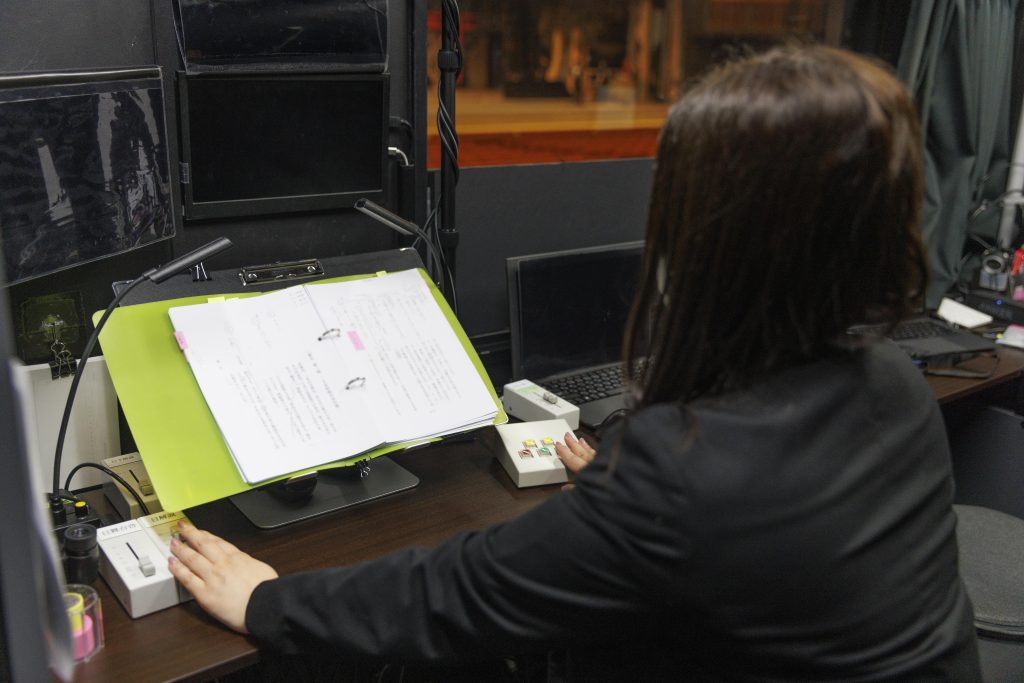
Furthermore, even during the run of the month’s plays, certain movements may be omitted, or expressions may change, causing the commentary to no longer match the acting. Every time this happens, the production staff consults with the commentators to eliminate or re-record the comments, continuously making adjustments. This ongoing process ensures that the audio guides are in synchronization with the live performance on stage.
Ideal Audio Guide
The audio guide provides support for beginners, but at the Kabukiza Theatre, about 40% of the audience uses it at each performance. Popular plays are often performed repeatedly, and in particular, classic pieces have been staged dozens or even hundreds of times, so “I try to make my comments easy to understand for beginners while also adding new and unique content for Kabuki enthusiasts,” says Ms. Yokode.
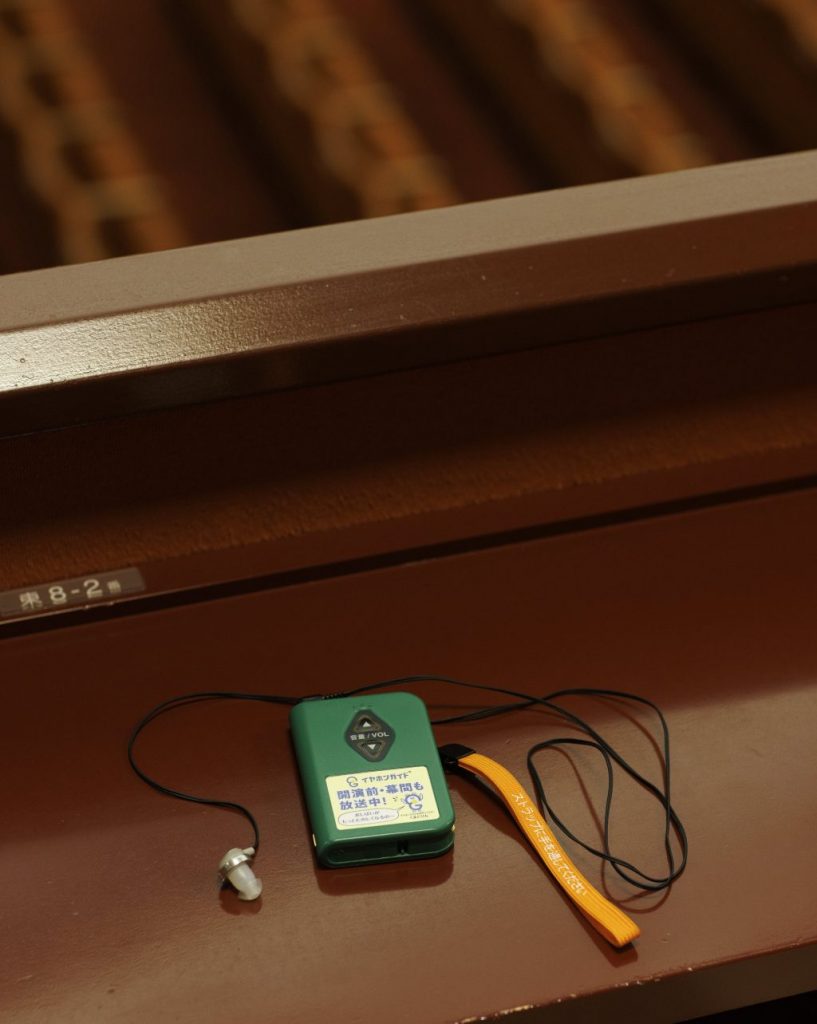
Ms. Yokode says, “I sometimes see people writing on social media, ‘I heard a lot of things on the audio guide but forgot what I heard.’ I think that’s the ideal audio guide.” She continues, “If the users find the commentary interesting, it means they weren’t fully focused on the performance. It would be best if they said, ‘I’m glad I rented the audio guide because I enjoyed the play, but I don’t remember what the comments said.’ I strive to produce an audio guide that allows users to discover and enjoy a broader world that they may not be able to understand on their own.”
After the interview, I saw the July Program’s evening show on the opening day with the audio guide. The play featured many actors playing multiple roles, but thanks to Ms. Yokode’s commentary, I was able to enjoy it without losing track of the story. The program had various powerful staging elements that were fun to watch for beginners and suitable for forgetting the summer heat, like a waterfall with real water and a ship covering the whole stage. I hope those of you reading this article will enjoy it with the audio guide!
Text: Erica Sawaguchi
Photo: Osamu Kirihara (except ★)
Translation: Erika Ikeda
The simultaneous commentary earphone guide is a service that provides easy-to-understand commentary on traditional performing arts, such as Kabuki and Bunraku. It offers audio guide devices for rent at theatres and audio content to be enjoyed at home.
https://www.eg-gm.jp/e_guide/ (in Japanese)


